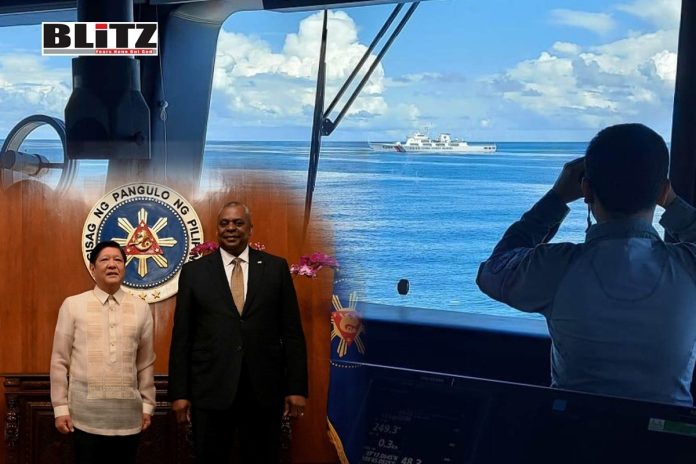The recent announcement by the US Army Pacific regarding the deployment of the 1st Multi-Domain Task Force’s Mid-Range Capability (MRC) missile system to Northern Luzon, Philippines, as part of Exercise Salaknib 24, has captured significant global attention. This deployment, hailed as a “historic first”, is widely interpreted as a calculated strategic move by the United States to strengthen its footprint and assert its influence in the Indo-Pacific region. With tensions escalating in this crucial geopolitical arena, the deployment signifies a notable shift in the regional military dynamics and underscores the US’s commitment to its strategic interests in the area.
The deployment of the Typhon missile system, or MRC, to the Philippines underscores the US’s determination to bolster its military prowess in the region, especially given the rising tensions in the South China Sea. With its capability to launch Tomahawk and SM-6 missiles, the Typhon system is being touted by US media as a transformative force in the Indo-Pacific, potentially reshaping the strategic balance and intensifying the already complex dynamics in the area.
The War Zone, in its analysis, pointed out that the Typhon system has the range to reach key areas in China, including the southeastern corner of the mainland and Hainan Island, which hosts critical naval and other bases. This deployment, therefore, presents new challenges and potential threats to Chinese forces, amplifying the existing tensions in the region.
While the deployment of the Typhon missile system may seem formidable at first glance, military experts suggest that its actual deterrent impact could be constrained. A Typhon system battery comprises four launchers, a command post, and support vehicles, all designed for mobility and swift deployment. Despite this, doubts have been raised by experts regarding the efficacy of the Tomahawk and SM-6 missiles. Questions about their capabilities and effectiveness against advanced defense systems and emerging threats have cast shadows over their touted strategic value in the region.
Wei Dongxu, a Beijing-based military expert, highlighted that the Tomahawk missile, being a subsonic cruise missile without radar-defeating stealth design, can be easily detected and intercepted by advanced defense systems. Similarly, the SM-6, while capable against subsonic and supersonic aerial targets, lacks defense capabilities against hypersonic weapons and stealth aircraft.
In essence, the Typhon system, despite its modern packaging, may be perceived as outdated by contemporary military standards. Its deployment, therefore, may carry more symbolic significance aimed at showcasing US military prowess rather than serving as a practical deterrent.
The deployment of the Typhon missile system to the Philippines has sparked concerns regarding Manila’s position and its potential impact on Philippine-China relations. Many experts warn that the Philippines could unwittingly find itself caught in the crossfire of the broader US-China geopolitical competition, potentially risking its own interests and stability in the process.
Zhang Junshe, a Chinese military expert, warned that launching missiles from Philippine territory would make the Philippines a target for retaliation. He urged the Philippine government to carefully consider the consequences of aligning itself too closely with US interests.
The deployment has also provided China with justification, albeit indirectly, for potential military actions against perceived threats emanating from Philippine territory. This development has shifted the dynamics in the South China Sea, with the Philippines potentially becoming a flashpoint in US-China relations.
The Philippine government’s approval of the Typhon missile system deployment prompts inquiries into its strategic agenda and priorities. Critics contend that Manila’s cooperation with Washington’s agenda may not inherently serve the Philippines’ enduring security and developmental objectives. This alignment with US interests raises doubts about the Philippines’ autonomy in shaping its foreign policy and the potential repercussions on its long-term stability and prosperity.
Shen Yi, a professor at Fudan University in Shanghai, likened the Philippines’ position to that of an “uncontrollable child” provoking a larger entity with potentially dangerous consequences. He warned that the Philippines, despite wielding a powerful “gun” in the form of the Typhon system, may find itself ill-equipped to handle the repercussions of its actions.
The deployment of the Typhon missile system to the Philippines highlights the shifting geopolitical dynamics in the Indo-Pacific. As the US seeks to strengthen its strategic footprint and exert influence in the region, there are growing concerns about the potential impact on regional stability and security. This move has intensified debates about power balances, alliances, and the future trajectory of the Indo-Pacific geopolitical landscape, raising questions about its long-term implications.
Caught in the midst of the US-China rivalry, the Philippines finds itself in a precarious balancing act. Maneuvering its relations with both superpowers, Manila is tasked with prioritizing its national interests, security, and overarching development objectives. The deployment of the Typhon system serves as a stark reminder of the intricate geopolitical landscape and the formidable challenges confronting the Philippines in navigating this high-stakes game of strategic maneuvering. As tensions escalate and power dynamics shift, Manila’s decisions will profoundly shape its future trajectory and regional standing.




